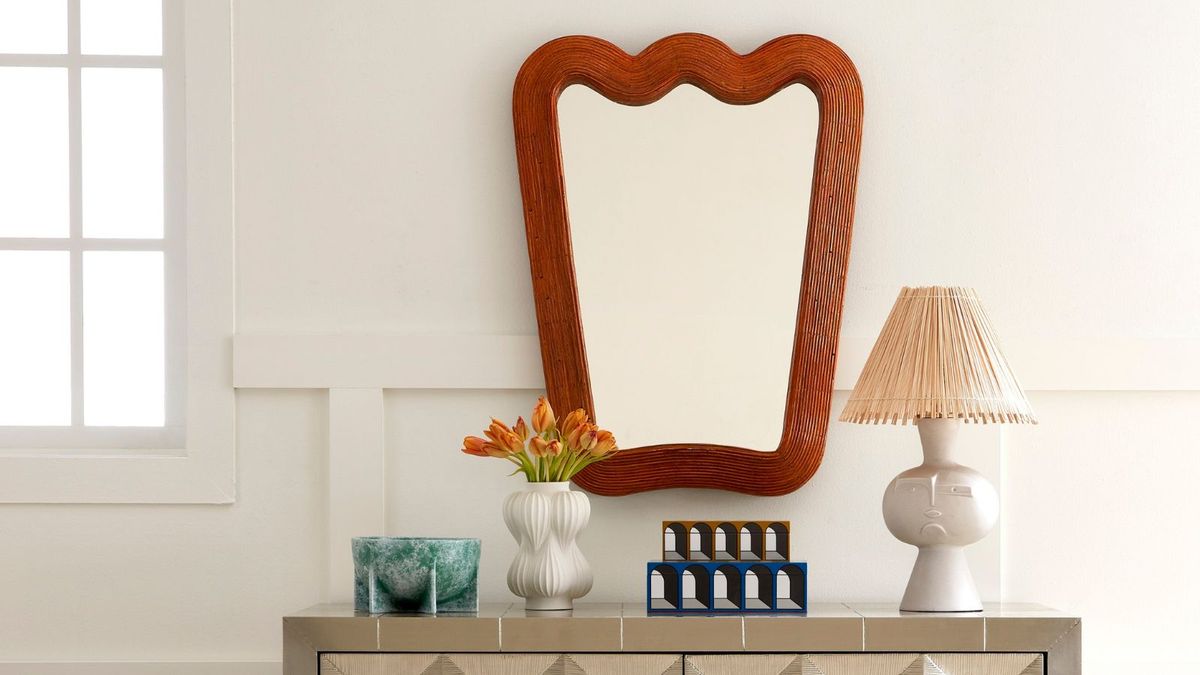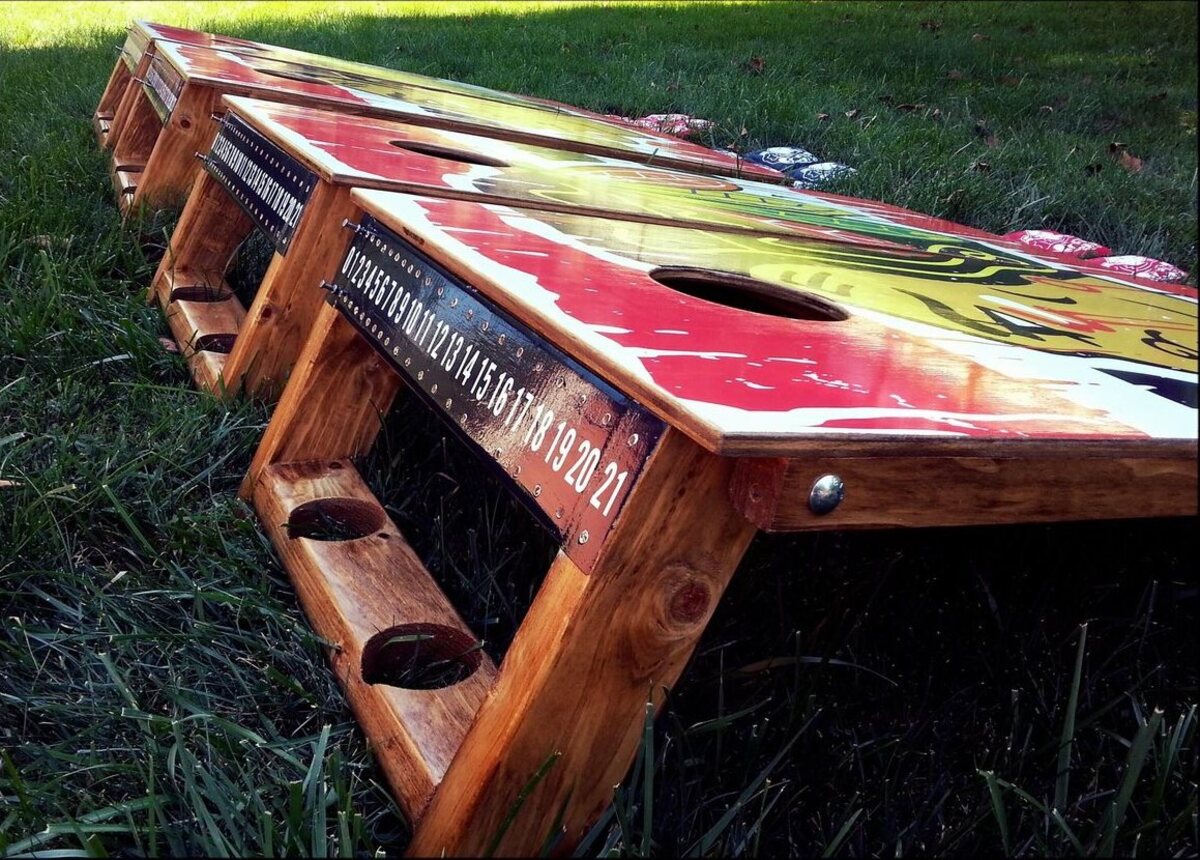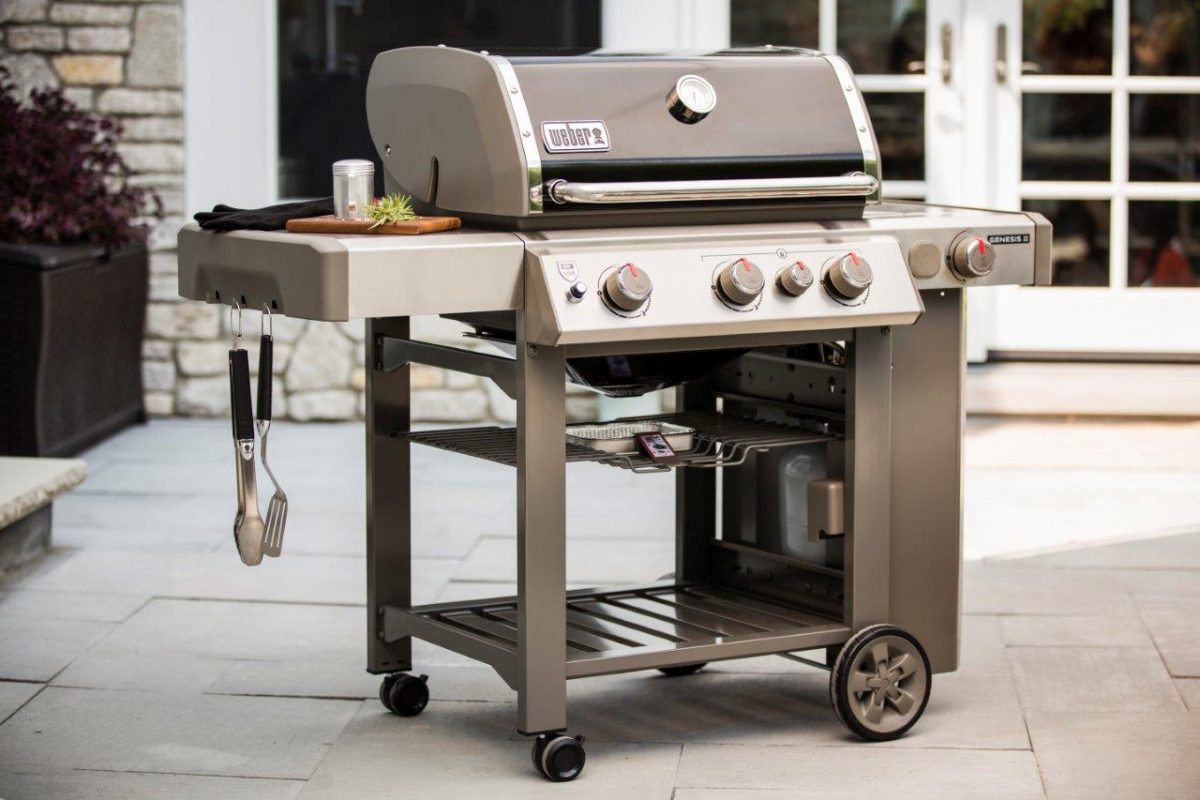

Articles
Why Are Mirrors So Expensive
Modified: January 5, 2024
Discover the reasons behind the high prices of mirrors in this insightful article. Explore the factors contributing to the cost and find out if there are affordable alternatives available.
(Many of the links in this article redirect to a specific reviewed product. Your purchase of these products through affiliate links helps to generate commission for Storables.com, at no extra cost. Learn more)
Introduction
Have you ever wondered why mirrors can be so expensive? You walk into a furniture store or browse online, and you’re met with price tags that seem exorbitant for a simple reflective surface. But there’s more to mirrors than meets the eye. From the cost of raw materials to the manufacturing processes, design and style considerations, and even market demand and supply dynamics, there are several factors that contribute to the high price of mirrors. In this article, we’ll delve into the various reasons why mirrors can be expensive. So, let’s dive in and uncover the mysteries behind mirror price tags.
Key Takeaways:
- Mirrors are expensive due to high-quality raw materials, intricate manufacturing processes, and design considerations. Understanding these factors helps consumers make informed decisions when purchasing mirrors.
- Market demand, branding, and transportation costs also contribute to mirror prices. Investing in reputable brands and understanding the value mirrors provide can help consumers find the perfect mirror for their needs and budget.
Read more: Why Is HVAC So Expensive
The Cost of Raw Materials
One of the primary factors contributing to the high price of mirrors is the cost of raw materials. Mirrors typically consist of a sheet of glass coated with a reflective material, such as silver or aluminum. These materials can be quite expensive, especially when you consider their quality and thickness.
High-quality glass is essential for producing clear and distortion-free reflections. Manufacturers often use premium-grade glass that undergoes a meticulous process of cutting, polishing, and finishing to ensure optimal clarity. This type of glass comes at a higher cost than standard glass used in everyday objects.
Additionally, the reflective material used to create the mirror’s coating also impacts its cost. Silver is one of the most commonly used materials due to its excellent reflective properties. However, silver is a precious metal, and its cost can fluctuate based on market prices. Aluminum is a more affordable alternative, but it may not offer the same level of reflectivity as silver.
The price of raw materials can vary depending on the quality, thickness, and quantity required for manufacturing mirrors. Manufacturers carefully analyze these factors to ensure that the mirrors they produce meet the desired standards and specifications.
Furthermore, the transportation and handling of these delicate materials can also add to the overall cost. Glass sheets need to be carefully transported to avoid breakage, and the reflective materials must be stored and handled with caution to prevent any damage or contamination.
In summary, the cost of high-quality glass and reflective materials, along with the careful handling and transportation involved, contribute significantly to the overall price of mirrors.
Manufacturing Processes
The manufacturing processes involved in creating mirrors are complex and require specialized equipment and skilled labor. These processes contribute to the higher cost of mirrors.
One of the key steps in mirror production is applying the reflective coating to the glass surface. This process involves depositing a thin layer of metal, such as silver or aluminum, onto the glass. The metal layer needs to be applied evenly and precisely to ensure a smooth and reflective surface.
The deposition process can be carried out through various methods, including chemical deposition, evaporation, and sputtering. Each method requires specific equipment and expertise, further adding to the manufacturing costs.
Another important consideration in mirror manufacturing is the quality control process. To ensure that each mirror meets the required standards, manufacturers conduct rigorous quality checks at various stages of production. This involves inspecting the glass for imperfections, ensuring the durability of the reflective coating, and verifying the overall quality of the mirror.
Additionally, the fabrication of the mirror frames or edges may also contribute to the cost. Depending on the design and style, frames can be made from materials like wood, metal, or even elaborate materials like crystals. The cutting, shaping, and finishing processes involved in creating these frames require skilled craftsmanship and specialized machinery, which adds to the overall manufacturing expenses.
In summary, the intricate manufacturing processes, including the application of the reflective coating, quality control measures, and fabrication of frames, contribute to the higher price of mirrors.
Quality and Durability
When it comes to mirrors, quality and durability are crucial factors that can significantly impact their price. High-quality mirrors are designed to provide clear and distortion-free reflections, while also being resistant to scratches and degradation over time.
Manufacturers invest in superior materials and craftsmanship to ensure that their mirrors meet stringent quality standards. Premium-grade glass with exceptional clarity and thickness is used to provide the best possible reflection. The reflective coating is carefully applied to ensure uniformity and durability, allowing the mirror to retain its reflective properties for an extended period.
Moreover, the frames and edges of mirrors are also crafted with attention to detail and durability. Well-built frames not only enhance the aesthetics of the mirror but also provide stability and protection to the glass. High-quality finishes and construction methods contribute to the overall durability of the mirror.
Furthermore, reputable mirror manufacturers often subject their products to rigorous testing to ensure that they meet industry standards for safety and quality. These tests may include assessments of impact resistance, scratch resistance, and resistance to environmental factors such as moisture and heat.
While these quality measures add to the cost, they also ensure that the mirrors are long-lasting and provide a high level of performance. Investing in a mirror with superior quality and durability can save you money in the long run, as it will require fewer replacements and repairs.
In summary, the emphasis on quality materials, meticulous craftsmanship, and durability testing contribute to the higher price of mirrors, but also ensure that consumers receive a product that will stand the test of time.
Design and Style
When it comes to mirrors, design and style play a significant role in determining their price. Mirrors come in a wide range of shapes, sizes, and decorative elements, catering to different preferences and interior design themes.
Manufacturers invest time and effort into creating unique and aesthetically pleasing designs that appeal to consumers. From sleek and modern designs to intricate and ornate frames, each style requires careful attention to detail and skilled craftsmanship.
Furthermore, the use of high-quality materials in the design elements can contribute to the higher price. For example, mirrors adorned with crystal detailing or intricate wood carvings may be more expensive due to the cost of these materials and the labor required to create them.
In addition to the frame design, the shape and size of the mirror can also impact its price. Custom shapes or large-sized mirrors often require special manufacturing processes, increasing the cost. Unusual shapes or oversized mirrors may also require more durable glass and a sturdier frame to ensure stability, adding to the overall cost.
Moreover, the style of the mirror can also influence its price. Mirrors with innovative features and technologies, such as backlit mirrors or smart mirrors with integrated lighting or touch controls, may come at a premium price due to the additional functionalities they offer.
In summary, the design, style, and use of high-quality materials in mirrors contribute to their price. By offering a range of designs and styles, manufacturers cater to different consumer preferences, but this diversity also comes at varying price points.
Read more: Why Are Rugs So Expensive
Customization and Specialty Mirrors
Customization and specialty mirrors are another factor that contributes to the higher price of mirrors. These types of mirrors are designed to meet the unique requirements and preferences of individual customers.
Customization options allow customers to personalize their mirrors to suit their specific needs. This can include selecting the size, shape, frame design, and even the type of reflective coating. Customization requires additional time, effort, and materials, all of which contribute to the higher price.
Specialty mirrors cater to specific purposes or industries. For example, mirrors used in dance studios or gyms require a specific degree of reflectivity to ensure proper visibility and clarity. Mirrors used in surveillance or security applications may have additional features such as one-way visibility or anti-reflective coatings. These specialty mirrors often involve more intricate manufacturing processes and specialized materials, resulting in higher costs.
Furthermore, the use of specialty materials can also contribute to the higher price of mirrors. For instance, mirrors made from high-quality antique glass or mirrors with unique finishes like aged bronze or smoked glass may have a higher price tag due to the rarity and craftsmanship involved.
Customization and specialty mirrors offer customers the opportunity to have a mirror that perfectly fits their needs and preferences. However, it’s important to note that the customization process and the use of specialty materials and features can add to the overall cost.
In summary, customization and specialty mirrors provide unique options for customers but also come with an additional cost due to the personalized nature and specialized manufacturing processes involved.
When purchasing a mirror, consider the size, quality of the glass, and the frame material. Larger, high-quality mirrors with solid wood frames tend to be more expensive. Look for sales or consider second-hand options to save money.
Branding and Reputation
Branding and reputation in the world of mirrors can also contribute to the higher price of certain mirror brands. Well-established and reputable brands have invested years, even decades, in building a strong brand image and reputation for producing high-quality mirrors.
These brands have consistently demonstrated their commitment to craftsmanship, innovation, and customer satisfaction. They often use premium materials and employ skilled artisans to create mirrors that are known for their durability, clarity, and aesthetic appeal.
Consumers are willing to pay a premium for mirrors from reputable brands because they trust the brand’s reputation and expect a higher level of quality. These brands go above and beyond to ensure their mirrors meet the strictest standards and undergo thorough quality control processes.
In addition to the quality aspect, reputable brands also invest in unique designs and styles that set them apart from competitors. They continuously innovate and keep up with the latest trends and technologies, offering customers mirrors that reflect current design preferences and advancements.
The value of branding and reputation is not solely based on the product itself, but also extends to the customer experience. Reputable brands often provide exceptional customer service, including warranties, after-sales support, and assistance with installation.
While mirrors from well-known brands may come with a higher price tag, the investment is often justified by the assurance of superior quality, lasting durability, and the overall brand experience.
In summary, branding and reputation play a significant role in the pricing of mirrors. Established brands with a strong reputation for quality and customer satisfaction command higher prices due to the trust and perceived value associated with their products.
Market Demand and Supply
Market demand and supply dynamics also influence the pricing of mirrors. The law of supply and demand dictates that when a product is in high demand and limited supply, its price tends to increase.
Mirrors are a popular and highly sought-after item for various applications, including home decor, interior design, and commercial use. As a result, the demand for mirrors remains consistently high.
Manufacturers and retailers take advantage of this demand by setting prices that reflect the market’s willingness to pay for their products. They consider factors such as consumer preferences, trends, and the perceived value of the mirrors in determining their pricing strategy.
Moreover, the supply of mirrors can also impact their price. If there are limitations in the production capacity or scarcity of raw materials, it can lead to a decrease in the supply of mirrors. In such cases, manufacturers may need to increase their prices to compensate for the higher cost or limited availability of materials.
On the other hand, when there is an oversupply of mirrors in the market, it can lead to price reductions and promotions as manufacturers and retailers aim to clear their inventory and attract customers.
Market competition also plays a role in determining prices. Manufacturers and retailers may adjust their pricing strategies to gain a competitive edge, offering different price points based on factors like quality, design, and brand reputation.
Overall, the interplay between market demand and supply, consumer preferences, and competition influences the pricing of mirrors. When demand is high, and supply is limited, mirror prices tend to be higher. Conversely, when supply exceeds demand, prices may be more competitive.
In summary, market demand and supply dynamics, along with consumer preferences and competition, impact the pricing of mirrors in the market.
Distribution and Transportation Costs
Distribution and transportation costs are factors that contribute to the overall price of mirrors. Once the mirrors are manufactured, they need to be transported from the production facility to distributors, retailers, or directly to customers.
The cost of distribution and transportation includes various aspects, such as packaging, handling, storage, and shipping. Mirrors are fragile items that require careful handling and packaging to prevent damage during transit. This often involves using specialized packaging materials and techniques, which can add to the cost.
Transportation costs will depend on factors such as the distance to be covered, transportation mode chosen, and the size and weight of the mirrors. Large mirrors or bulk orders may require special arrangements, such as dedicated trucks or freight carriers, which come at a higher cost compared to regular shipping services.
In addition, international shipments may incur additional costs in the form of customs duties, taxes, and import/export fees. These charges are often passed on to the consumer, contributing to the overall price of the mirrors.
The logistics of distribution also play a role in pricing. Distributors and retailers need to account for their own operational costs, including warehousing, inventory management, and order fulfillment. These costs are factored into the final retail price of the mirrors.
Furthermore, the geographic location of the customer can also impact the price due to varying shipping costs or import tariffs associated with certain regions.
In summary, distribution and transportation costs, including packaging, handling, shipping, and related logistical expenses, are considered in the pricing of mirrors. Factors such as distance, shipping method, and international shipment requirements can contribute to the overall cost.
Read more: Why Are Curtains So Expensive
Taxes and Tariffs
Taxes and tariffs are additional factors that can influence the pricing of mirrors. These charges are imposed by governments on imported and exported goods, including mirrors.
Import tariffs are taxes levied on products that are brought into a country from another country. When mirrors are imported, they may be subject to import duties or tariffs imposed by the destination country’s government. The rates of these tariffs can vary depending on the country and the classification of the mirrors.
Similarly, when mirrors are exported from one country to another, the exporting country may impose export taxes or duties. These charges are added to the cost of the mirrors and are ultimately passed on to the consumer.
In addition to import and export tariffs, taxes such as value-added tax (VAT) or sales tax may also be applicable in certain regions or countries. These taxes are typically a percentage of the total selling price of the mirrors and can vary depending on local regulations.
Taxes and tariffs not only impact the final price of the mirrors but can also affect the competitiveness of manufacturers and retailers in international markets. Import tariffs can make imported mirrors more expensive compared to domestically produced ones, while export tariffs can affect the competitiveness of mirrors in foreign markets.
It’s important to note that tax rates and tariffs can change over time due to changes in government policies or international trade agreements. Manufacturers and retailers need to consider these factors when setting the pricing for their mirrors.
In summary, taxes and tariffs imposed on the import and export of mirrors by governments can contribute to the overall price of the mirrors. Import duties, export taxes, and value-added taxes are factors that manufacturers and retailers need to take into account when pricing their products.
Conclusion
In conclusion, the high price of mirrors can be attributed to various factors. The cost of raw materials, including high-quality glass and reflective coatings, contributes significantly to the overall price. The intricate manufacturing processes, quality control measures, and craftsmanship involved in creating mirrors also add to their cost.
Design and style considerations, including unique frames and customization options, can further increase the price. Reputable brands command higher prices due to their established reputation for quality and customer satisfaction.
Market demand and supply dynamics, along with distribution and transportation costs, impact the pricing of mirrors. Taxes, tariffs, and other import/export fees imposed by governments can also influence the final price.
While mirrors can be expensive, it’s important to consider the value they provide. High-quality mirrors offer clear and distortion-free reflections, durability, and a lasting aesthetic appeal. Investing in a reputable brand or customized mirror can ensure a product that meets your specific needs and preferences.
In the end, the price of mirrors reflects the combination of all these factors, as well as the perceived value and demand in the market. By understanding the various factors influencing mirror pricing, consumers can make informed decisions and find the perfect mirror for their needs and budget.
Frequently Asked Questions about Why Are Mirrors So Expensive
Was this page helpful?
At Storables.com, we guarantee accurate and reliable information. Our content, validated by Expert Board Contributors, is crafted following stringent Editorial Policies. We're committed to providing you with well-researched, expert-backed insights for all your informational needs.














0 thoughts on “Why Are Mirrors So Expensive”